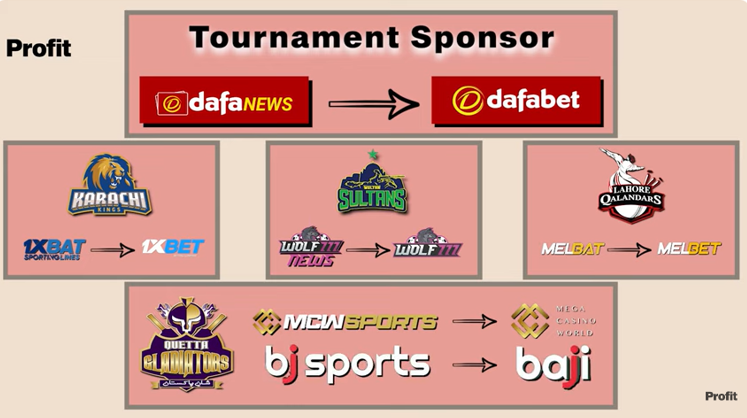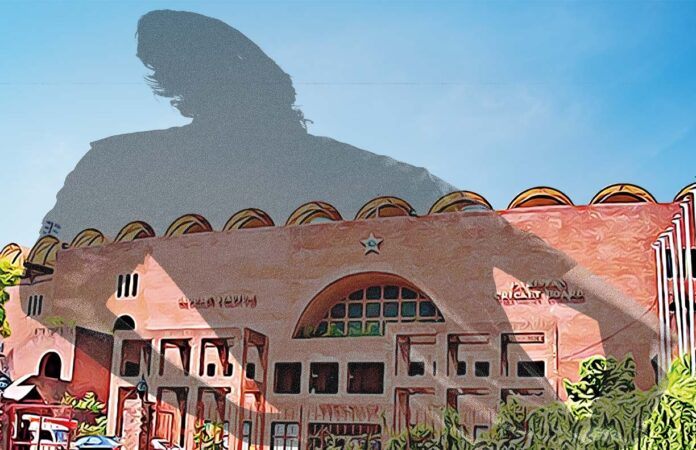Pakistan Cricket has gone to the dogs.
Again.
It is rare for high ranking officials of any sport to willingly tender their resignation in Pakistan. It is rarer still for them to do so in the middle of a World Cup. And it is virtually unheard of for them to do so on the basis, not of performance, but of alleged accusations of a conflict of interest. Yet that is exactly the position Inzamam ul Haq, the Chief Selector of the Pakistan Cricket Team, found himself in on the 30th of October last week.
The former Pakistan captain (lovingly known as Inzi Bhai) was under fire because of the Sports Management Agency that represented him. According to the Pakistan Cricket Board (PCB) and a number of journalists, Inzi has a conflict of interest because he is likely to pick players from the same sports management agency that represented him. Not only this, he is also accused of having a direct financial interest in the sports management company, which would constitute another clear conflict of interest.
The agency in question is Saya Corp, which along with its founder Talha Rehmani is at the centre of the controversy. This is the company that not only represents Inzi and other former players like Mushtaq Ahmad, but also is responsible for some of the country’s biggest cricket stars including Captain Babar Azam, his deputy Muhammad Rizwan, and Shaheen Shah Afridi. To hear the PCB speak of it, Rehmani and Saya Corp have fostered an environment whereby the agency has unduly influenced selection in the national team. But people close to the top management at Saya have a different take — that the board is initiating a witch-hunt against the agency for their role in ending the surrogate advertising of illegal betting companies in Pakistan. Companies that had been paying the PCB and PSL franchises big bucks for sponsorship.
The truth exists somewhere in the middle. Over the course of the past two weeks, Profit spoke to a number of operatives in Pakistan’s cricket infrastructure. Most requested anonymity, among them a former Chairman, a former CEO, two former General Managers of the PCB, a high-up in Saya Corps, one former Captain of the Pakistan Cricket Team, and current officials of the PCB. We also spoke to cricket writer Osman Sammiuddin and the former head of acquisition at the PCB Imran Ahmad Khan. But even as all eyes are focused on the investigation committee setup at the PCB’s offices in the Gadaffi stadium, our story starts far away, in a small, quaintly named village called Khuda Ki Basti halfway between Jamshoro and Hyderabad.
A small town boy stumbles into making it big
This is a success story. There is no other way to describe the meteoric rise of Talha Rehmani and Saya Corp. The agency is currently the largest and most powerful company representing Pakistani cricketers, including at least five or six players that make up the core of the current Pakistan team across all three cricket formats. So how did he do it? After all, Rehmani is an unlikely figure to rise and become the country’s premier sports management agent. Yet in the course of the past seven years he has grown to be one of the most powerful men in Pakistani cricket – the only financially viable sport in a country of 22 crore people.
Born in a village two hours away from Karachi, Rehmani, a bright kid with a knack for mathematics and fixing things, secured a degree in Electrical Engineering in 2011 from the Mehran University of Engineering and Technology. His first big break was qualifying as a Fulbright scholar and securing admission in the prestigious Carnegie Mellon University in Pennsylvania where he did his Masters in Robotics.
Upon returning to Pakistan, Rehmani began lecturing at Lahore’s Information Technology University far away from his hometown. It was here that he would first become involved in the world of cricket. There are different origin stories floating around about Rehmani. One states that he was the tenant of a former cricketer in Lahore and was introduced into the world of cricket through his landlord.
In any case, Rehmani had stumbled into the world of cricket, and he quickly started developing a rapport with many of these former players. As a smart, foreign educated young man he was also able to help them with a number of their problems. It started off quite innocuous actually. A player asked Rehmani to go over a legal contract he was supposed to sign for a brand endorsement. The player was not fluent in English and Rehmani explained the contents to him, after which the player called his agent and asked to have some changes made. The player suggested that Rehmani should get into the business of being a sports agent.
At the time, sports agencies weren’t really a thing in Pakistan. It was mostly independent agents that had a prominent player or two on their contract. “There is an entire little economy that surrounds an international cricket star,” one prominent sports agent tells us on the condition of anonymity. “Most of these boys and girls come from pretty humble backgrounds. And there are 20-30 households they are contributing to. Once they become stars they spend money on their brothers, their cousins, neighbours, former coaches and mentors and anyone they can. That is all while playing cricket full time. Plus they also are often unaware of how contracts and negotiations work and that is where sports agents come in.”
These agents work the same way talent agents work for actors. They find you brand endorsements, negotiate your deals with foreign franchise leagues, take care of your PR and public image, and in exchange take a cut of the proceeds. Now remember, Talha Rehmani had no experience with cricket whatsoever. He had very much accidentally become acquainted with the world of cricket and so he politely shrugged off the suggestion to become an agent.
But as time passed the idea festered in the back of his mind. Along with a few of his friends, Rehmani started collecting any and all cricket related data he could find and running it through specially designed computer algorithms. He figured that if he could identify upcoming Pakistani talent that had not yet become mainstream and sign them up early, he might have a shot of making this work.
In 2014, Rehmani was introduced to Muhammad Rizwan. “That first meeting was quite by chance,” says one source familiar with the early days of Saya. “We were at the National Cricket Academy with a friend of ours that had access and there Talha spotted Rizwan doing laps of the ground. Mind you, this was in the punishing Lahore heat. Everyone was taking cover under a tree or something and this young man just kept running. When he was done with his laps, we approached him.”
At the time, Rizwan was 22 years old. He had not played a single international game and was very much an up-and-comer. But the data Talha and his friends had been crunching had already earmarked him as one for the future. Rizwan started talking to Talha, who admitted he had no experience in being a cricket agent and Rizwan would be his first client. Despite this, Rizwan agreed. And this is where Saya Corps was born.
The Tableegh angle
From 2014 onwards Talha Rehmani and Saya got cracking. For the first couple of years they managed Muhammad Rizwan and got a couple of other players on board too. Up until this point it was a pretty small operation.
Rehmani set off to do things differently. For starters he created a system in which players would sign contracts and brand agreements directly with the sponsor. Before this, most agents would sign on behalf of their clients. Some were known to take advantage of their clients that were not fluent in English or highly educated and take larger cuts that they deserved. By making players direct parties in these agreements Rehmani fostered trust amongst the players and many started coming on board.
One other tactic was the introduction of a mentorship program very early in Saya’s journey. In this programme, Saya would identify young players, give them access to coaches, pay for their equipment, pay for their school fees if necessary and groom them into a future star. If your initial hunch was correct and the player has what it takes, they will make it as a professional and start making money. That is where the sports management company starts getting their cut.
This was a shakeup. There weren’t a lot of agents around at this point but Saya Corps had come out of nowhere and started dominating the market which was always going to ruffle some feathers.
A big part of this was the former Pakistani leg-spinner Mushtaq Muhammad. Muhammad Rizwan had introduced Talha to Mushtaq. Now, one would assume that Mushtaq and Rizwan would know each other through cricket. But remember, Rizwan was still a back-up keeper that had no international experience at this point. The real reason behind their association was that Rizwan and Mushtaq have both been very publicly affiliated with the Tableeghi Jamaat which is an Islamic preaching organisation. A sort of Pakistani Jehovah’s Witnesses for the foreign reader. And even though Talha himself has never been an official member of the organisation, he now had two players in his pocket who were prominently and publicly a part of the organisation. Once Saya had signed a contract with Mushtaq the agency was making in-roads into a pretty significant base of players.
The Tableeghi Jamaat has had influence in the Pakistan cricket team for a while. Other than Mushtaq, Saeed Anwar, Muhammad Yousaf, and Saqlain Mushtaq are all famous cricketing members of the group. But perhaps no one is as famously associated with the group as former Captain Inzamam ul Haq. During his captaincy, Inzamam had actually been known to bring preachers from the group with him on tour and arrange sessions with them for the team. He was famously opposed in this by fast bowler Shoaib Akhtar. It was through Mushtaq Ahmad then that Inzi was introduced to Talha Rehmani sometime in 2016.
At the time, Inzamam was the Chief Selector of the Pakistan Cricket Team. In fact he had been the one to pick Muhammad Rizwan for his first international test game which he played in November 2016. At this point, Saya signed on Inzi as a client as well. The reader would do well to remember that former players like Inzamam are regularly invited for speaking gigs, as the guest of honour at ceremonies, on television and for other engagements. As such they also require representation much like current players.
But Inzi was not just a former player. He was also the Chief Selector with the power to pick and drop players as well as the access to a huge scouting network. Access to this network could be a gamechanger for any agency.
“As soon as Inzamam became the Chief Selector, all of the players that were earmarked as talents for the future were suddenly signing with him,” says one former player agent. “And this was a guy with no prior experience which irked a lot of other agents. Where was he getting such an impressive scouting network? Shaheen, Harris Sohail, Babar Azam all joined Saya and they also started becoming quite prominent.”
“Saya Corps bloomed during Inzamam Sb’s first tenure as Chief Selector because of the access they had. They were very easily admitted into the National Cricket Academy, meetings with players were arranged and they were encouraged to join Saya,” says one former high ranking PCB official on the condition of anonymity. “Now just think about this. As a young player you see that your coach is represented by Saya, the Captain is represented by Saya, and the Chief Selector is represented by them as well. Some part of you would start thinking there is a better chance of selection if you’re on the same platform as all these big names,” they explain.
So is there a conflict of interest?
It is an interesting theory. The problem is there is no possible way to prove it or to disapprove it. And that is the thing about conflict of interest. As cricket writer Osman Samiuddin explains to Profit, sometimes the perception of conflict of interest is as bad as the real thing itself.

“The thing about conflict of interest is that even if there is a perception of it, it exists. It is not down to the substance of it, just the perception that there is a conflict of interest is enough,” he tells Profit. “Now take a look at the perception — one management company has five or six of the biggest stars and also represents the interests of Inzamam ul Haq who is the Chief Selector. That just isn’t good optics and raises questions.”
Others look on the situation more kindly. Imran Ahmad Khan, who was a part of the team that launched the HBL PSL in 2016 was also formerly the GM of Commercial Affairs at the PCB explains, optics don’t always mean something is fishy.
“The optics aren’t great, sure, and it might look like there is a conflict of interest but I am trying to understand how this is any different from what all player managers do. They might not have a registered company but their objective is to increase commercial earning opportunities for the talent that they represent,” explains Imran Ahmad Khan. Part of, Imran. In his time at the board, as Head of Player Acquisition for PSL, Imran dealt directly with a number of local and foreign cricketers as well as their agents.

“If the suggestion is that former players should not be represented in case they take up a position with a federation then that, I feel, is a very extreme position to take,” he goes on. “As far as I understand, player managers do not get a share from PCB and earnings.”
“Brendon McCullum and Jofra Archer are represented by the same player management company and this representation of current and former players by the same management company is not an alien concept in world cricket.”
This is where things stand as far as conflict of interest is concerned. And to cut a long story short, it boils down to the fact that while there is nothing illegal going on the optics aren’t necessarily good. And that is how things might have stayed if the PCB had not found what they seem to think is a smoking gun.
During the last week of October, rumours started flowing that there was a company registered in the United Kingdom that might undeniably prove a conflict of interest for Inzamam Ul Haq. Documents appeared that a company by the name of Yazoo had been registered in the UK back in 2020 with Inzamam ul Haq, his brother, Muhammad Rizwan, and Talha Rehmani as directors in it.
This is the company that has now become the basis of criticism against Saya and Inzamam. Mubasher Lucman, for example, issued a loud condemnation on his vlog using Yazoo as proof of some kind of conflict of interest. ARY’s Shoaib Jutt also asked PCB Chairman Zaka Ashraf about this during an interview to which Ashraf responded by saying it did seem there was a conflict of interest. Within a day the PCB announced an investigation into the matter. It was following this that Inzamam tendered his resignation.
Quite something, right? Not exactly. Because Yazoo isn’t really the smoking gun it is being portrayed to be.
How the business works and troublesome bicycle helmets
Let’s take a small break here to answer a quick question: How exactly does Saya Corps make money? There are essentially three sources of revenue here. The first is when a player that an agency signs up goes to a foreign league. You see, when you sign up for an agency as a player, you are essentially selling the rights to your cricket. That means if, for example, Shaheen Shah Afridi signs up to play The Hundred tournament in England for Welsh Fire, then he will not be negotiating his contract directly. Instead, the Welsh Fire will reach out to Saya Corps which will negotiate the contract on Shaheen’s behalf. Once a contract is signed, Saya Corps will get a commission. It is important to note here that this only happens with foreign leagues. So if a player is signed up by the HBL Pakistan Super League (HBL PSL) or plays for Pakistan, the sports agency does not get a cut from this even if they help in the negotiations.
Then comes the second source of revenue — brand endorsements. Just like in the case of foreign leagues, the sports agency directly deals with commercial clients. For example, Saya Corps might sign a deal with Pepsico which will then ask them for some of their talent for an advert. In the same way, Saya Corps will take a cut of what the player makes on this. There are many other elements to this. For big stars like Babar Azam, for example, Saya Corps is also responsible for building his own personal brand. For example, as one insider told Profit, Babar Azam prefers not to do advertisements for fast food brands because they are unhealthy and he does not want to be associated with them.
And finally we have investments. Business agents like Saya often offer services to their players to invest their money. That means if Saya negotiates an ad campaign for Muhammad Rizwan worth Rs 2 crores, they will then also offer Rizwan opportunities to invest this money. By their own mission statements Saya says they “mostly focus on early-to-growth-stage, consumer focused companies that align with our company’s ethos of connecting people and innovation through tech and design.”
This is where Yazoo comes in. The company over which Inzamam has resigned was an investment opportunity that Saya offered its clients in 2020. Back then, during the peak of the Covid-19 pandemic, e-commerce was the next big thing. To this end, Saya planned that they would order products from China and sell them on Amazon in the United Kingdom. To do this they had to set up a company in the UK, open a bank account and a warehouse. The only Saya clients that expressed interest in the project were Muhammad Rizwan and Inzamam ul Haque who became directors in the UK company. Talha, the leader of Saya, also invested his personal money in the company.
“It actually ended up being a pretty bad investment,” says one source close to Talha Rehmani. “I think they ordered bicycle helmets or something and didn’t end up selling any. Most of them are rotting somewhere in a warehouse in England we’re trying to get them off our hands by selling them in bulk I think.”
So there we have it. The big, bad investment being waved around on Vlogs and television channels was an attempt to sell bicycle helmets in the UK. The fact that Talha Rehmani was also a director in these is still cause for concern. After all, if you are business partners with your sports agent you would also want to ensure they do well in other aspects of their business. While this may not be a squeaky clean acquittal, it is far from the sort of smoking gun that would call for a Chief Selector to step down and for an investigative committee to be constituted.
The last throes of a sinking ship
The reality is that the current situation has been caused mainly by a cricket board on its last legs. With the clownish Zaka Ashraf regime desperately trying to save grace, the investigative committee and press releases are very much the last throes of a dying ship. Remember, at the time this report was filed, Zaka Ashraf had only two days left in his tenure. While he has asked for an extension his tenure was supposed to last until the 5th of November. Already internal communications of the board are showing rising unhappiness with the way Ashraf has conducted himself in these past few months. In particular it seems his attitude of trying to deflect and distract from his own failings is widely unpopular.
“The Zaka administration was only authorised to carry out day to day matters by the govt and courts pending the election of a BoG and Chairman but it has hired over 70 high paid employees who are not needed and has taken far reaching decisions which are under challenge in various High Courts. Above all, his utterances have badly demoralised and demotivated the players on tour,” says one former head of the PCB. “His term is ending on 5th Nov 2023. He has sought an extension while the global media is writing negatively about PCB and its chairman and Pakistanis are abusing him.”
Others concur.
“The PCB is in a very unstable position right now,” claims a different General Manager of the Board. “Zaka Ashraf’s tenure is ending on the 5th of November and the team isn’t performing well in the World Cup. Pointing fingers towards Saya Corps, towards Babar Azam, towards Mickey Arthur, and towards Inzamam is simply an attempt to deflect from the troubles that the Zaka Ashraf regime is plagued with.”
There we have it. The story up until this point has been that in 2014 a Sports Management Company by the name of Saya Corps was created by Talha Rehmani with the help of a few former cricketers and well meaning friends. The company does splendidly, and some agents and members of the cricket infrastructure grumble at its rise and raise questions of a conflict of interest. The questions are valid but mostly ignored and largely harmless. Then in 2023, in the middle of a world cup, the company is the centre of every conversation and the PCB takes a solid stance against it making it the subject of an investigation. Some claim it is a shallow attempt by the board to distract from its own failures. Makes sense, right? Even though all of this adds up, Saya Corps thinks there’s more to all this unwanted attention they are getting.
The current conundrum – central contracts
While Saya Corps and the PCB were busy fighting the media wars at home, the Pakistan Cricket Team has been playing cricket’s flagship event, the ODI World Cup, over in India.
The only problem was that before leaving for the flagship event, many of the players of the national team had not signed their central contracts. These are the contracts that players sign every year as a retainer and through which the board pays them a salary. The contracts are divided by category, and on this occasion some of the senior players wanted more of a cut. You see, the PCB has a few sources of revenue. Gate receipts, broadcast rights, franchise fees for the HBL PSL and sponsorships are the most obvious ones. But then they also receive large amounts of money from the ICC every year. The players wanted to get a cut of some of this ICC money. This is normal in most other parts of the world, and player unions represent the interests of players and negotiate these terms with the board.
In Pakistan, however, there is no players association. Historically, the PCB has offered terms and contracts to its players that are uncompetitive globally. Since there is no association, the players have not been able to fight for their rights. Now, however, something is a little different. With six or seven big players under the Saya umbrella, they have been able to better negotiate their position. Their managers have made them better aware of things like image rights and what other sportspersons of their calibre get globally.
As explained by a former head of the PCB, the demands were never before heard of. “This year an extraordinary situation arose during Zaka’s tenure. The players’ reps demanded an unprecedented increase in rates, plus a share of ICC and HBL PSL revenues. Inzimam supported them. There was a deadlock. The players refused to sign the contracts offered (percentage increase as in the past but no share of ICC and HBL PSL revenues),” he says in a written response to Profit’s question.
“The thing about Talha is what he does is look out for his players. I don’t think he is trying to destroy Pakistani cricket or anything, he is just doing his job which is protecting his players. He has them in his books and players stick with him because he gets them the best deals. As such, he has been known to help them negotiate with the board as well,” says Osman Samiuddin.
“On one level the PCB will always be adversarial towards Talha and Saya because the board has its own interests and suddenly here is this guy that is advocating for the most important players in Pakistan. In that way it is almost a quasi players association. If you have one guy representing 6-7 players he can bring some coherence into their demands and he can educate them about image rights which they can negotiate with the PCB. And this year the players have been far better informed about this stuff and they have pushed more than any other players have in the past. A lot of that push and knowledge has come from Talha. Unfortunately, players are still beholden to results. The World Cup campaign hasn’t gone that well so the players are now in a weaker negotiating position,” he adds.
The players want a cut of the revenue from the ICC and the HBL PSL. And these are not small numbers. The ICC hosts international tournaments like the Cricket World Cup and the T20 World Cup or the Champions Trophy, which attract cricket fans from around the world. From these tournaments, through gate receipts, broadcasting rights, and sponsorship deals, the ICC makes billions. In the projections for ICC’s 2015-23 cycle, the council is supposed to make up to $3 billion, which is then distributed through the different cricket boards. Larger boards that bring in larger television audiences like India and Australia get larger shares. Currently, the ICC is giving around $16.5 million to Pakistan annually until 2023.
And then there is the HBL PSL, which has turned into a behemoth over the years. Revenue for last year’s tournament indicates that just the title sponsorship for two years is worth $22 million for three years and the broadcasting rights are worth $25 million for a two year period. On top of this, the board also rakes in $15.65 million every year from the franchises in lieu of a franchise fee.
Since the players are the main drivers behind this earning, they want some of that to reflect in their bank accounts. But then why is the PCB so resistant? According to sources close to the top decision makers at Saya Corps, the main reason is something else — gambling.
The betting money angle and surrogate advertising
This is where our story gets intense. Some might say it is positively soapish even. Many of Profit’s regular subscribers might remember a video package from last year that got into the details of how betting websites were using surrogates to advertise in the HBL PSL and in international matches organised by the PCB.
Very briefly put, surrogate advertising is a loophole. For example in India there has long been a law in some states that bans the advertising of alcohol. So what alcohol companies do to get around this is launch a product with very similar brand recognition to their booze. Bacardi famously launched Bacardi records. It is the same with cricket and betting.
For example, one of the PCB’s main sponsors was Dafa News. Now, a website called Dafa News definitely existed and was a news website. But it was owned and operated by DafaBet, which is a well known betting company. While the law does not allow DafaBet to sponsor in Pakistan, there is nothing stopping a news website like Dafa News from sponsoring. Hence, a loophole.

In last year’s PSL, every team except Peshawar Zalmi and Islamabad United had the surrogate of a betting website sponsoring them. And these websites were paying the franchises big money to put their name on their shirts. Everybody was happy, that is, until the players resisted. Take the case of the Multan Sultans. As one former captain of the Pakistan Cricket Team tells us, when Wolf777 News sponsored the Multan Sultan for a reportedly whopping Rs 10 crores for two years, the team’s captain Muhammad Rizwan asked the management whether it was true that this was for a betting website.
“The management told him this wasn’t the case and Rizwan played with the logo for the first few matches. But he is a religious fellow and the doubt had crept into his mind so he asked a religious scholar for a fatwa. When the scholar told him it wasn’t allowed, Rizwan refused to wear the logo leading to a serious dispute with the team management. In the end, however, he got his way and taped over the logo when he came out to play the next day.”
This is a story corroborated by others. “Elements of it might be exaggerated but there was a very serious disagreement and Rizwan did cover the logo eventually,” says Osman Samiuddin.
On top of this, Rizwan was not the only player rejecting these sponsors. According to one source, Babar Azam was offered a massive contract of over Rs 25 crore to be sponsored by 1XBat, but advised by Saya Corps, he also declined the lucrative offer. For the players this was a matter of both principle and their image. But for the PSL franchises and the PCB it was a bone of contention because they were losing out on big sponsorship contracts. It was also at this point that Saya Corps reportedly began lobbying with the government to have these websites banned, which they succeeded in. On the 31st of October last week, the caretaker government also announced a crackdown on these websites.
“The PCB is upset about this, and so are the PSL franchises. These were massive earnings that they are now losing out on. I think some of them have finally started talking about it, but it has been brought up in conversations where some franchises have said they will suffer serious financial losses. The problem is, the PCB can’t do anything about it because it is a government thing. In the short term this is going to hurt them a hell of a lot and they are deeply concerned about it,” Osman Samiuddin tells Profit.
“What Talha is doing is good for the players, but at the same time he is in the unique position of having a lot of important players on his roster. That kind of unchecked power can be damaging and it is already causing problems. It is a pretty big deal that the country’s biggest agent is facing this media campaign.”
“I personally think this is an extreme take,” says Imran, who also served as PCB’s GM Commercial in the past. “You are talking about a Cricket Board that earns millions of dollars through ICC revenues and a simple perusal of publicly available financial statements will give you an idea about the Board’s sources of revenue. The PSL franchises have existed for more years than surrogate advertising has existed in Pakistan and the PSL ecosystem has weathered many storms around financial feasibility.”
“So to suggest that franchise owners or the PCB will bring down their premier cricketers because of this advertising suspension doesn’t make sense to me.”
“We have to keep in mind the fact that player management in Pakistan is not as developed as it is in some other major cricket playing countries. You have a very limited pool of player agents at the moment, unlike markets such as the UK or Australia. In fact, PCB only officially started registering agents around 2019-2020.”
And that is really what it boils down to. You have on your hands a powerful sports management company. As managers of players they have a duty to do right by their talent and give them the best possible contracts and support their rights — something that becomes even more important in the absence of a players association. At the same time, sports management is in a nascent stage in Pakistan so there aren’t really any rules out there per say. Lazy legislation and sloppy attempts at deflecting blame towards these parties is doing no one, especially cricketers, any good.


























😆 😂 😆 😂 Sponsored by Babar,Rizwan And Rehmani
I agree with the lazy comment in the end but that needs to be extended to the startup investment. Saya should have looked after their clients into this position. Also once they were in this position at least full disclosure should have been provided. But all this fades in comparison to the chairman who apparently uses his son to run the board’s day to day.
This headline is dishonest, highlights betting unproportionatly.
Players need agents to represent their fair share of revenue. Pakistan needs revenue to develop grass roots cricket. I say allow betting what’s the harm, most countries allow it it makes sport fun and most do it responsibly. Excess in anything is harmful.
PCB has send their shills to discredit this article.
Thank you for this extremely informative piece. Standing by our players for their rights.
Excellent report which exposes Zaka Ashraf. PCB and all other sports organisations must be depoliticized. Appointment of cronies has destroyed PIA etc and now PCB is the target.
Waqar 😄 🤣 I can Say Babar Rizwan and Inzi sent you to Lick thier balls 🏋️♀️
P.R by Saya Corporation
well researched and well-written
Inzi
Babar
Rizwan
After arrival at Pakistan, all 3 should be arrested and investigated by FBI.
GDPS Editor is a fascinating modification application for Geometry Dash SubZero, enabling you to craft entirely customizable game levels complete with new music and items.
Paid Promotion
Lifafa Post by Talha Rehmani Manger of Babar Inzi Rizwan
Looks like a good report and a good read. Those criticzing have not provided any argument so if you think it is all PR, please offer your facts and reasoning. Pakistani culture has developed hostility to successful businesses.
A very brief and insightful details about SAYA, angle for some and evil for many.